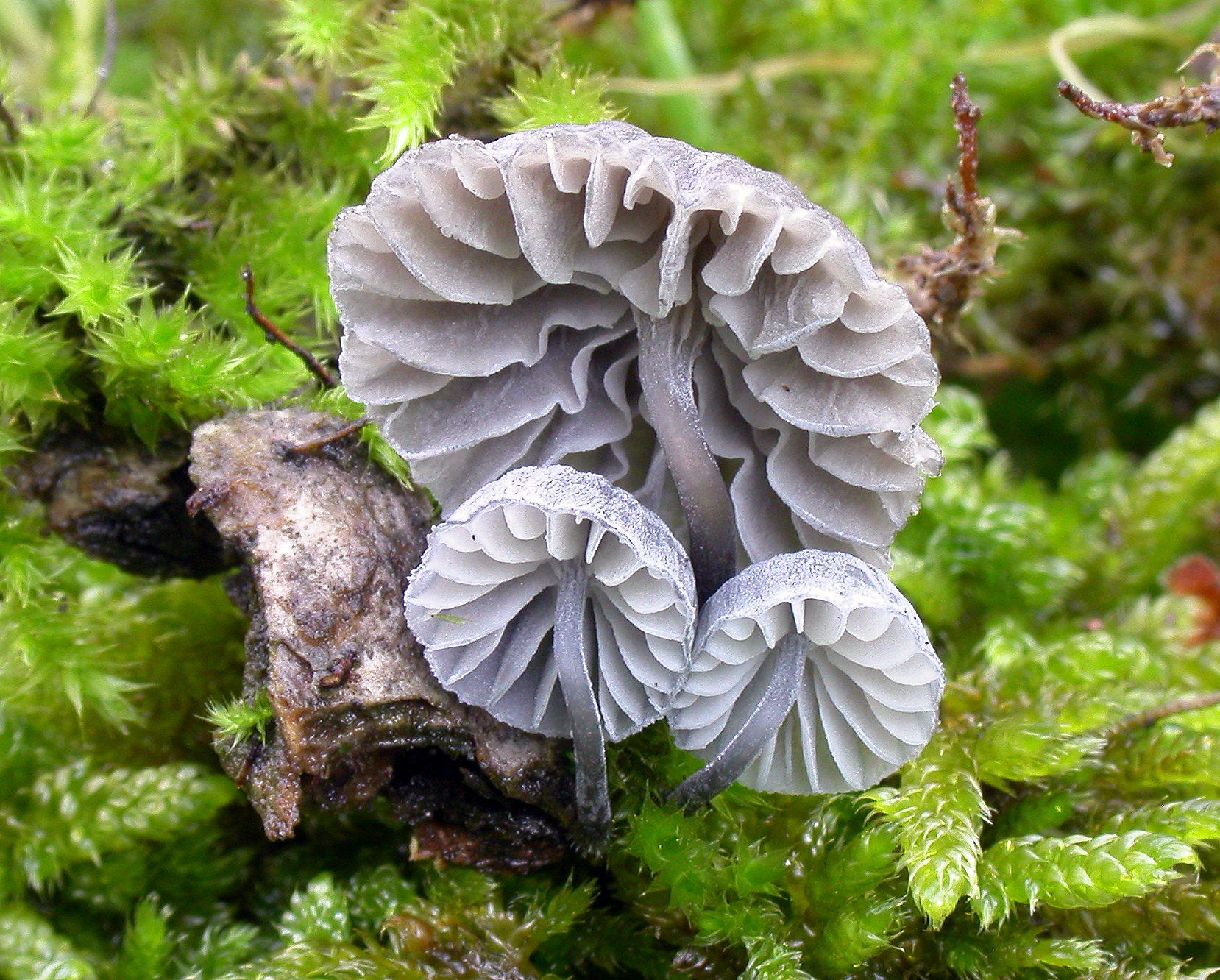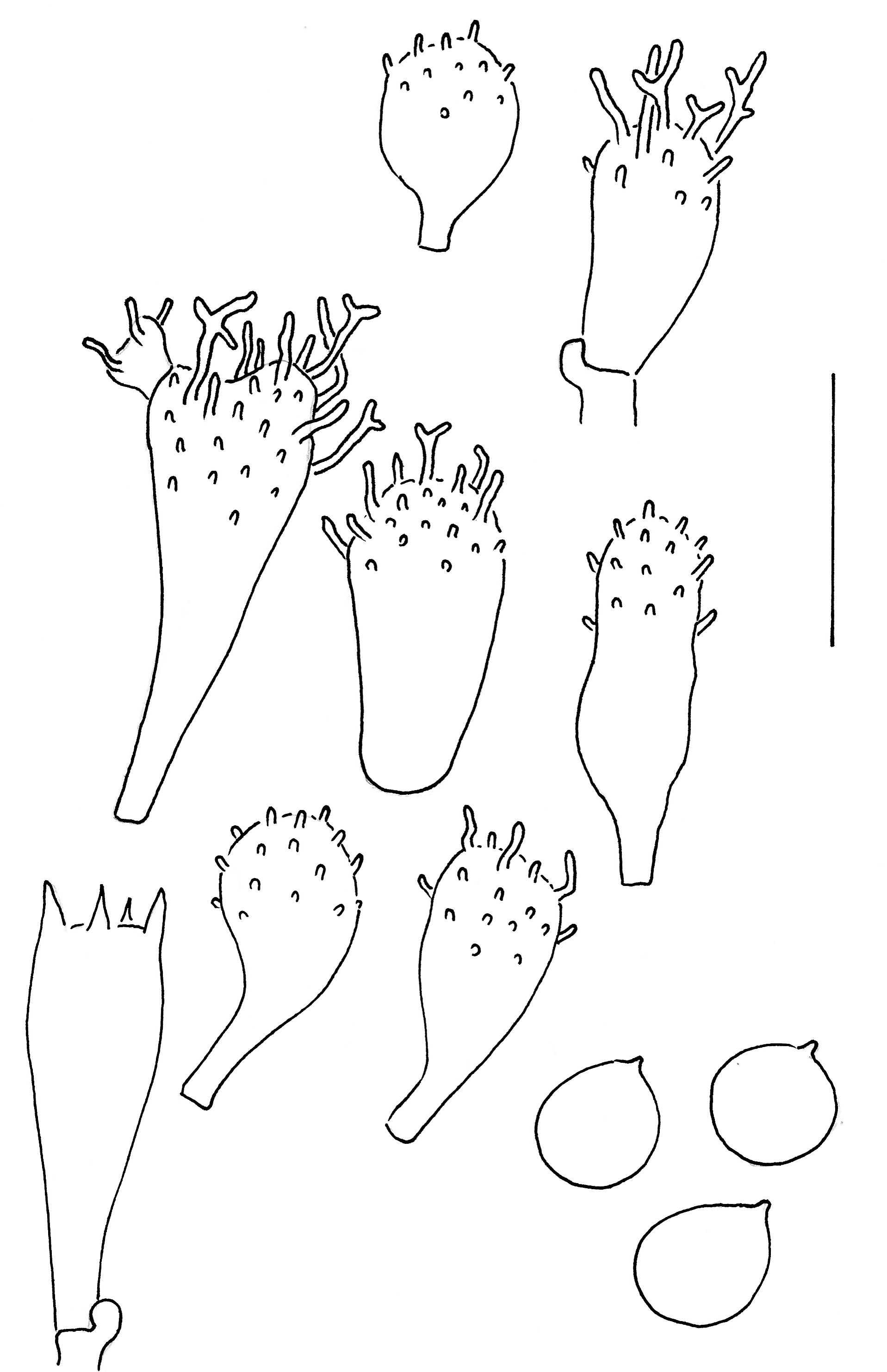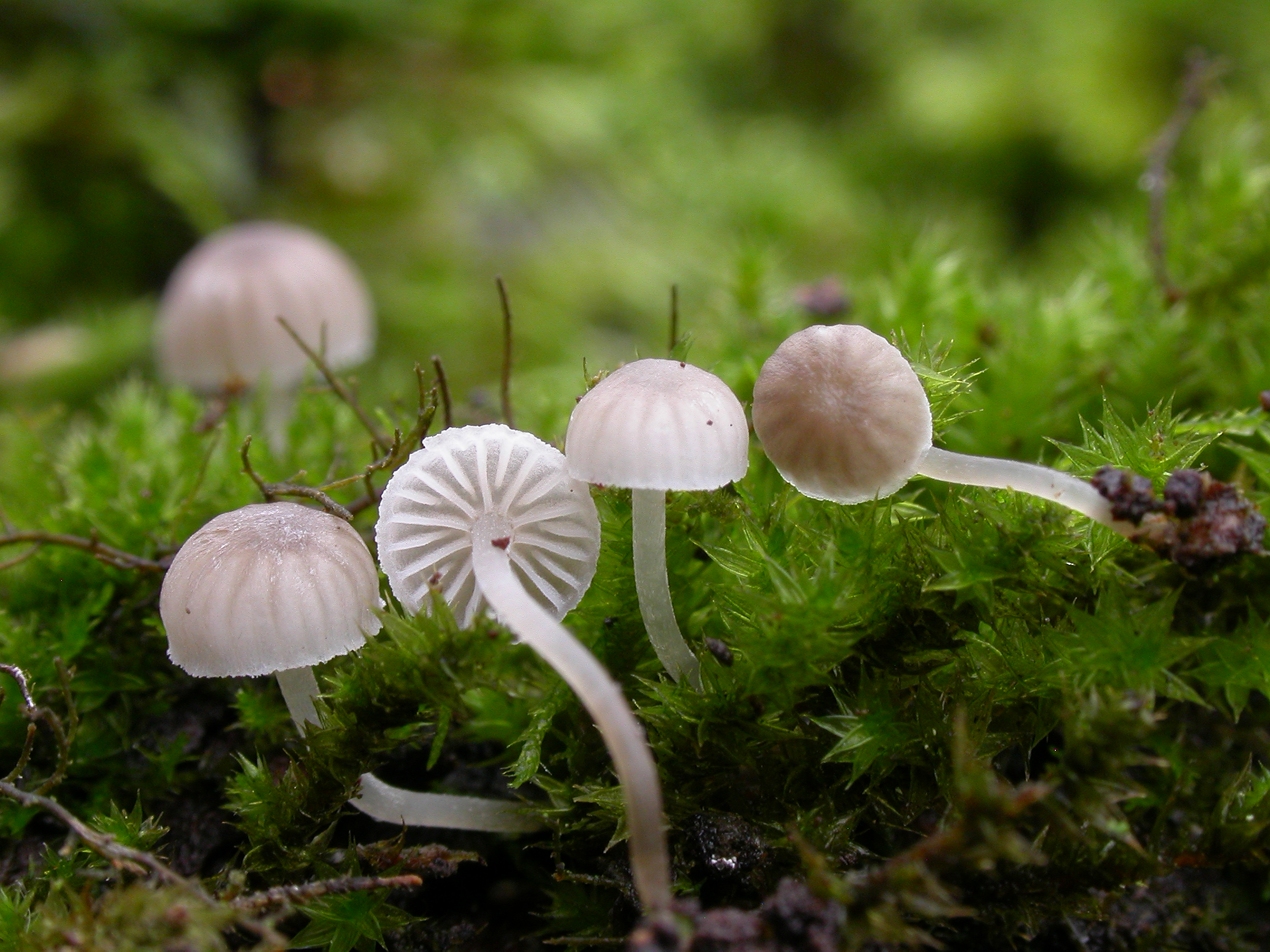Mycena pseudocorticola
Mycena pseudocorticola
Description
Cheilocystidia, basidium and spores.
Cap 2-12 mm across, hemispherical, parabolical, broadly conical to convex, occasionally with a small papilla or somewhat flattened, sulcate, translucent-striate, pruinose, glabrescent, bluish, dark to pale bluish grey, or slate grey, turning brownish with age. Gills 8-14 reaching the stem, broadly adnate, mostly decurrent with a short tooth, grey to pale bluish grey, or greyish white, becoming pale sepia brown with age, the edge paler. Stem 5-25 x 0.2-1 mm, cylindrical, equal, , pruinose-floccose, glabrescent, grey to bluish grey, more brownish with age, the base densely covered with long, white fibrils. Odour none. Basidia 25-36 x 9-12 µm, clavate, 4- or 2-spored, with plump sterigmata up to 13 µm long. Spores (4-spored) 8-10.5 x 7.5-10 µm, from 2-spored basidia up to 13 x 12 µm, Qav ˜ 1.1, globose to subglobose, amyloid. Cheilocystidia 12-54 x 6-25 µm, occuring mixed with basidia, clavate, covered with unevenly spaced, simple to branched, curved to tortuous excrescences up to 20 µm long. Pleurocystidia absent. Lamellar trama dextrinoid. Hyphae of the pileipellis 2-5 µm wide, covered with cylindrical excrescences. Hyphae of the cortical layer of the stem diverticulate, the terminal cells 25 - 37.5 µm long, diverticulate. Clamps present in 4-spored form, absent in 2-spored form.
Ecology and distribution
On moss-covered bark of various deciduous trees. Autumn to winter. Common in southern parts of Norway.



